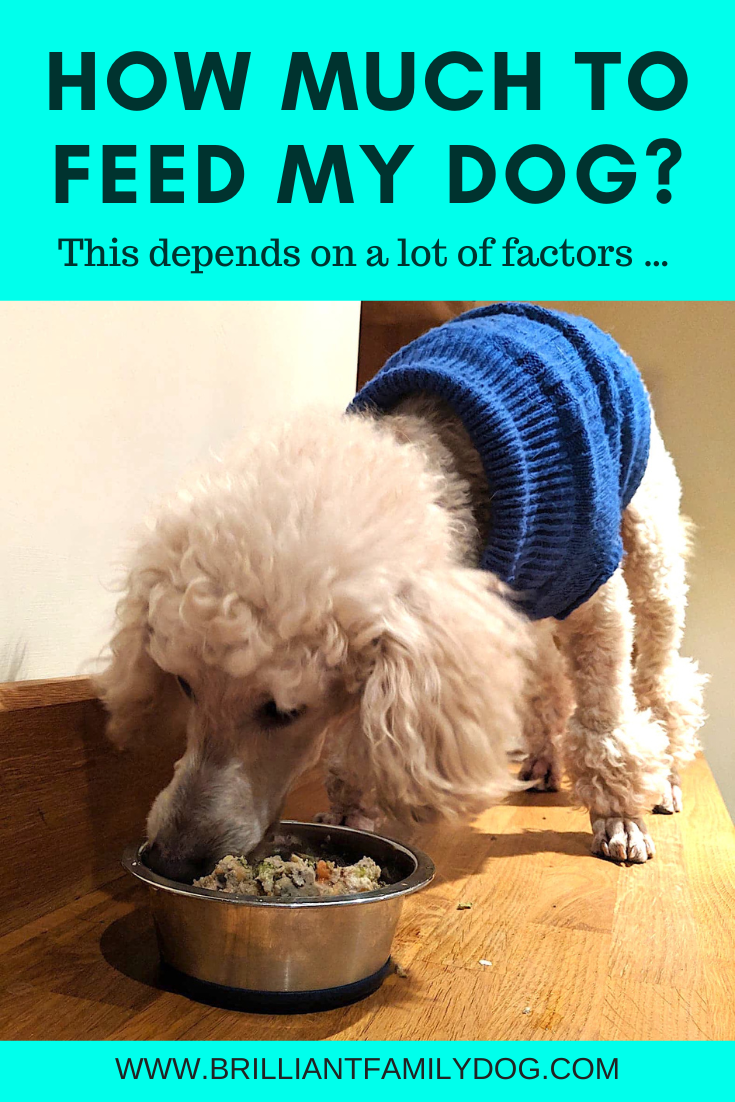Great question! But before you can decide HOW MUCH to feed, you have to decide WHAT to feed.
Here's an article to help you work out what's best for you and your lifestyle.
Back again? Good! Let’s now see how to work out how much of your chosen diet to give your dog.
If you have decided on buying a commercial food you'll see instructions on the bag or tin telling you how much to feed, and the first thing to do is totally ignore these!
These will be general guidelines and not tailored to your individual dog. We all know people - even in the same family - who are a completely different shape and size from each other, and respond very differently to food. Don’t you hate those friends who can plough through chips and cake and still fit a size 14?!
So you have to adapt to your particular dog’s food and nutrient absorption.
So now what??
Working out how much to feed is actually much easier than you may think.
Working like a stockman you need to feed to condition.
And how do you assess your dog's condition? Search the internet for body condition charts and you'll see some great illustrations of what your dog should actually look like, from the side and from above.
Then after studying your dog carefully with your eyes, use your hands to confirm what you see - especially if your dog is swathed in fluff and curls and you can’t see much of what’s underneath.
Ribs - you should be able to feel all of them, but not cut yourself on them.
Spine - feel those little knobs down her back?
Pin bones - the top of the pelvis over the back legs. These points should be very easy to feel.
Neck roll - is the back of the neck soft and “empty” skin rolls? If it’s solid and in bumpy rolls, you’re in trouble.
Now, naturally, there’s variation between breeds. Some have a very flat back and the spine knobs and pin bones are not so easy to detect - but they should be findable!
I use this system all the time to keep my dogs in their best condition. I never feed what food guidelines suggest.
As an example of the variation between individuals, I have three dogs:
English Shepherd, f, spayed, 24kg: she gets 11-12 oz of raw food a day.
Whippet, f, spayed, 11kg: she gets 9 oz a day
Miniature Poodle, m, entire, 7kg: gets 6 oz a day
So you can see that if I fed my Whippet in proportion to what the others are getting, she’d look like a toast-rack! … or my ES would look like a hippo.
As a dog’s weight is one of the most important things to get right in order to promote a long and healthy life, this is something you want to spend some time on.
It may take you two months of adjusting quantities gradually, of continually feeling your dog - and keeping a careful note of the numbers - before you can settle on a suitable amount.
Puppies
Here’s an exception for you: growing pups!
Here the best thing to do is feed to appetite, as well as to condition. Don’t starve your puppy! Like us, they grow in spurts, so may suddenly become much hungrier. Go with this. But don’t forget to be checking condition at the same time.
What does my dog think?
Another great question! Here are some answers for you.
How many meals?
And here’s a general guide on how many meals you should be feeding:
Exceptionally tiny or large dogs may need some variation.
Some dogs prefer to eat once a day, usually an evening meal.
Others may enjoy a snack earlier, breakfast or lunchtime.
Let your dog guide you!


